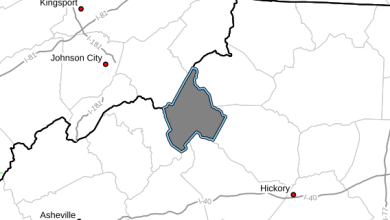Last Updated on January 22, 2015 1:07 pm
NCDOT crews are working hard to keep roads safe for motorists in advance of another storm system that could bring snow, sleet, and rain to the region.
The National Weather Service says snow, sleet, freezing rain, and rain are possible Friday and Saturday across parts of NCDOT's Division 11, which includes Alleghany, Ashe, Avery, Caldwell, Surry, Watauga, Wilkes, and Yadkin counties. Alleghany, Ashe, and Watauga counties could see 1-3 inches of snow, with more accumulation possible in elevations above 3,000 feet, according to the National Weather Service.
To prepare for possible snow accumulation, crews will brine primary routes in Alleghany, Ashe, Avery, and Watauga counties. Brine is highly effective at preventing snow and ice from bonding to the road surface. However, brining isn't typically done in areas where precipitation is likely to begin as rain, since the rain washes the brine off the pavement and dilutes the solution.
Some other benefits of brining include:
- Lowering the freezing temperature of water to about 18 degrees Fahrenheit (-8 Celsius).
- Keeping snow from being compacted by traffic, which can turn it into ice.
- More effective and coats roadways better than plain salt or sand.
- Giving NCDOT time, since crews can brine up to 48 hours in advance of a storm as long as it doesn’t rain. Rain washes most of the brine solution off of the roadway.
- Costing 15 cents per gallon to produce. One mile of a single lane of road can be treated for about $6; rock salt costs more than $14 to treat the same stretch of road.
As the storm moves in, NCDOT will monitor road conditions, clear snow, remove icy patches, and mobilize additional crews, if necessary.
Motorists are reminded not to travel during winter weather events, unless absolutely necessary. If you must travel, here are a few safety tips:
- Clear all windows and mirrors of snow and ice. It might be helpful to let your vehicle run for several minutes with both front and rear defrosters on to help the process along.
- Remove as much loose snow as possible from your vehicle’s trunk, roof, and hood to keep snow from blowing off and obscuring your vision and that of drivers behind you. Clear off your rear bumper to expose the license plate.
- Be sure that headlights, tail lights, external mirror,s and marker lights are free of obscuring snow and ice.
- Bring your cell phone with you, even on short trips. You never know when you might need it.
- Slow down and leave plenty of space between you and the vehicle in front. We can’t stress this enough. Excessive speed is the number one cause of winter weather accidents.
- Do not use your cruise control.
- Drive smoothly, without sudden accelerating, braking, or turning.
- Bridges and overpasses freeze long before other parts of the roadway. Use extreme caution and avoid using your brakes on the bridges (this is where slowing down and leaving plenty of space is most important).
If you find yourself behind one of our vehicles, be sure to leave plenty of space so they can safely apply the brine, sand, or salt on the roads. They are usually slower than the rest of the traffic, so pass with extreme caution.


















